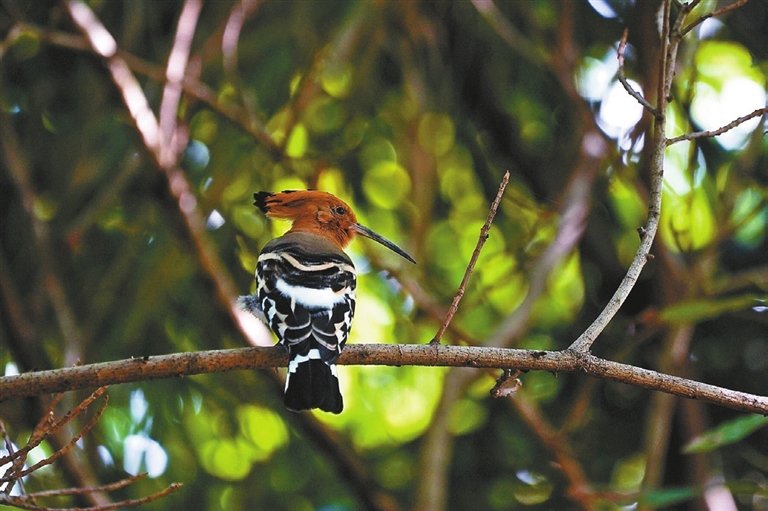

Wang Haolan Holly_cn@163.com ALTHOUGH the heatwave of summer prevails, our feathered friends still travel thousands of miles along the East Asia-Australia flyway to their wintering grounds or stopovers in the southern coastal city of Shenzhen, in response to the autumn season and the cycle of life. The 2022 autumn migratory season is predicted by local birdwatching society veteran birdwatchers as a “big year” for migratory birds. According to China Bird Report Center’s website and WeChat miniprogram, since Aug. 1, nearly 380 reports and 200 bird species have been registered, while during the same period last year, only 280 reports and 167 species were registered. Shenzhen Bay Park’s Zone C, stretching from the mouth of Dasha River to Shenzhen Bay Bridge, and Shenzhen Talent Park in Nanshan District are now welcoming not only shorebirds using Shenzhen as a rest stop during their migration, but are also receiving some rarely seen species such as the Eurasian hoopoe, Eurasian wryneck, Asian paradise-flycatcher, yellow-rumped flycatcher, great knot and Pallas’ grasshopper warbler. Among them, the hoopoe and wryneck still have a stable presence in the area. The hoopoe was first spotted on a lawn near the Crescent Valley area of Shenzhen Bay Park on Aug. 13, then moved to Shenzhen Talent Park and has been staying there. The wryneck has been seen staying at Shenzhen Talent Park since Sept. 21. The river mouth near Exit D of Shenzhen Bay Metro Station has been relatively quiet; but during low tide, it still witnessed the arrival of over 500 black-tailed godwits, with a rarely seen bar-tailed godwit among them. Along with the large flocks of ducks, shorebirds, cormorants and the beloved black-faced spoonbills, in September and October, some rarely seen passerine bird species have been visiting the area, and this year the black-naped oriole, ashy drongo, brown shrike and dark-sided flycatcher were also seen. Zhongshan Park near Nantou Ancient Town is another nice birdwatching location during the beginning of the migratory season. According to the China Bird Report Center, the park had a total of 34 reports and 65 bird species in 2021. Among the reports, 22 were registered in October. For this year’s autumn migratory season, which started from the beginning of August, the park has registered some 40 species, including the oriental dollarbird, black-naped oriole, pale-legged warbler and two exciting records of the rarely seen forest wagtail and tiger shrike. Birdwatchers spotted a forest wagtail foraging on the ground among the dead leaves in the park Sept. 14. The species has only six spotting records in the China Bird Record Center. A juvenile tiger shrike was spotted on a tree at the park Sept. 12. Shenzhen has no previous spotting for the species; however, it is the city’s 410th registered bird species, according to a former member of Shenzhen Bird Watching Society. Yanhan Hill Park in Nanshan District is becoming a popular birding location, boasting spotting records of the ashy minivet, black-naped monarch, speckled piculet and grey-headed canary flycatcher. One of its record highlights this autumn is a juvenile male Siberian blue robin, which was first spotted Sept. 10 and stayed in the park for about eight days. In addition to the mentioned parks, locations such as Dachan Bay, Shenzhen Bao’an International Airport, Shenzhen Wetlands Resorts and Fuyong Wetland in Bao’an District also witnessed the arrival of migratory birds including the grey bushchat, common cuckoo, blue-tailed bee-eater and zitting cisticola. It is also worth mentioning that a Mongolian short-toed lark, previously considered a subspecies of the greater short-toed lark but now classified as a subspecies of the Hume’s short-toed lark, stayed for three days from Sept. 19 to 21 at a wetland near the airport together with a group of pipits. | 
